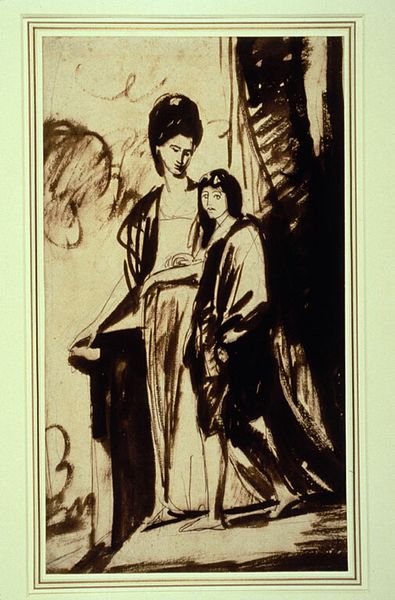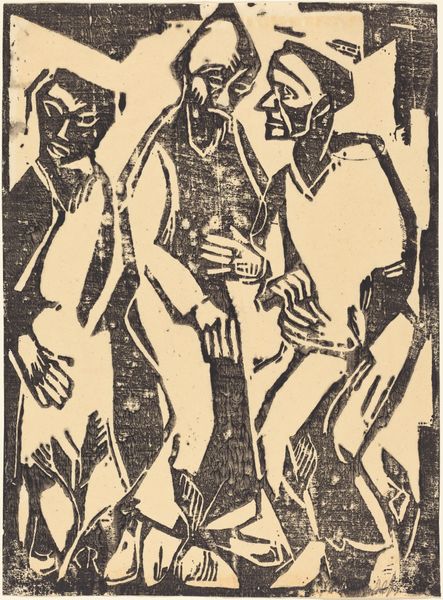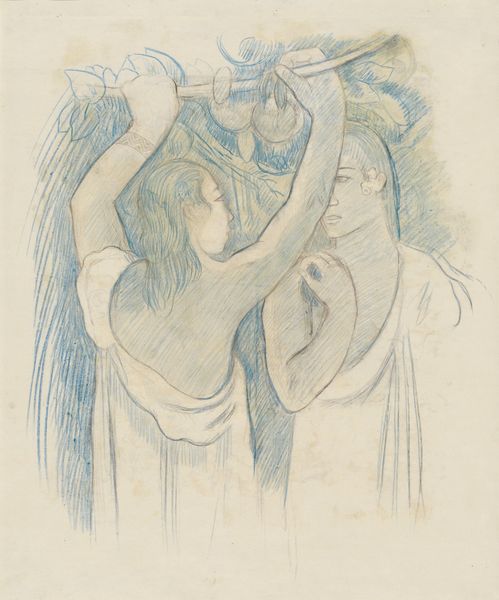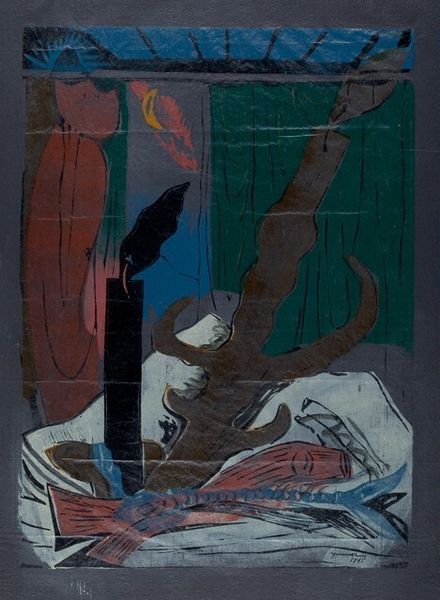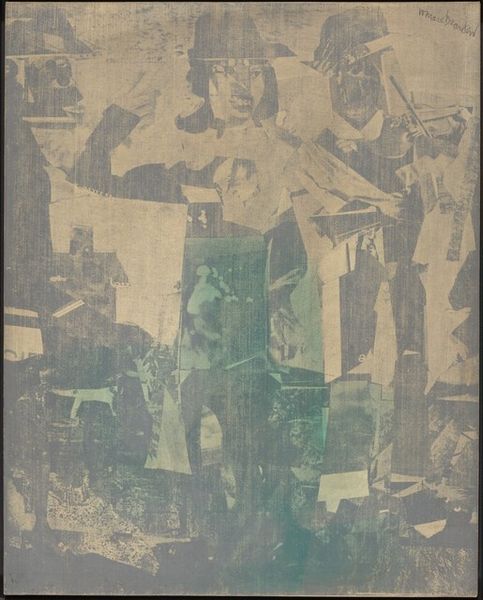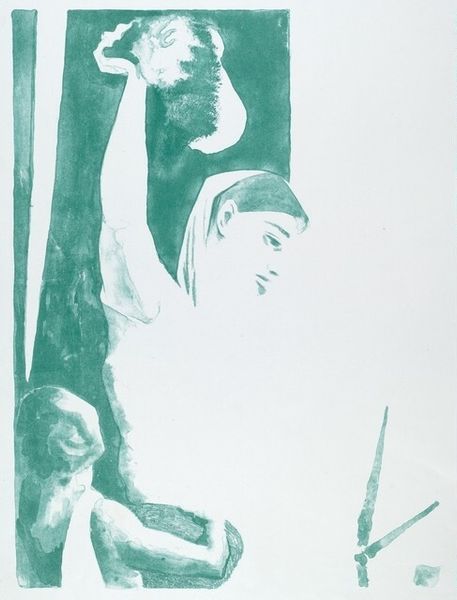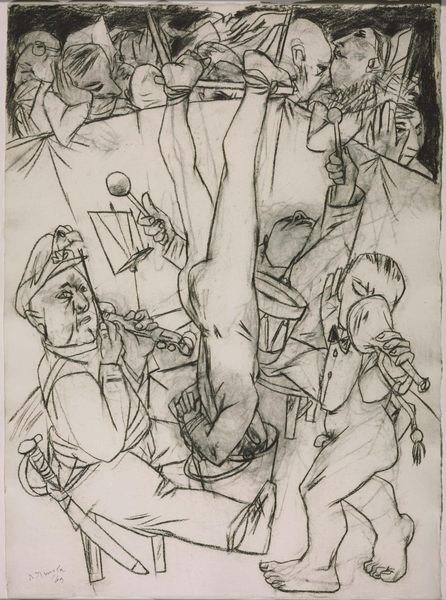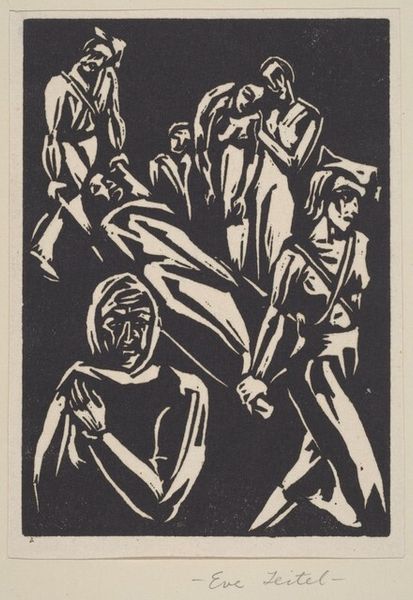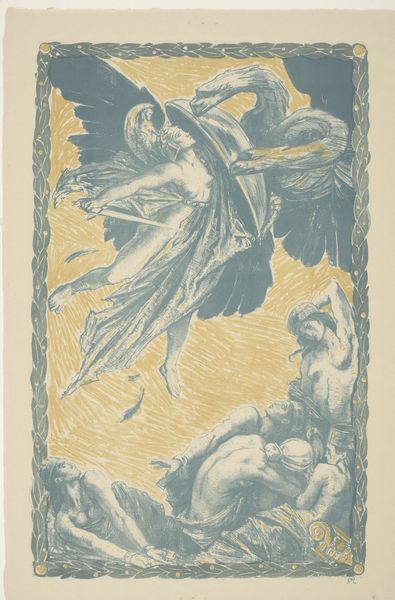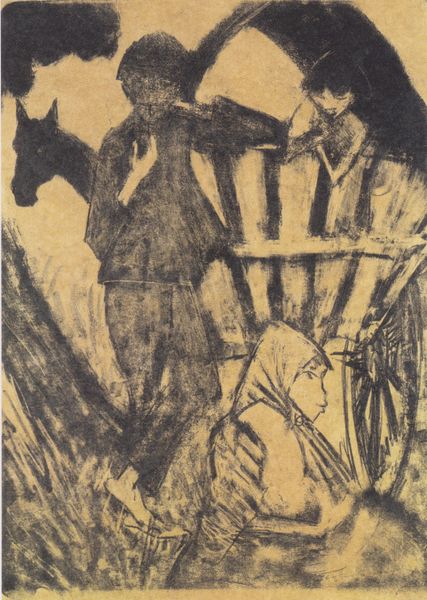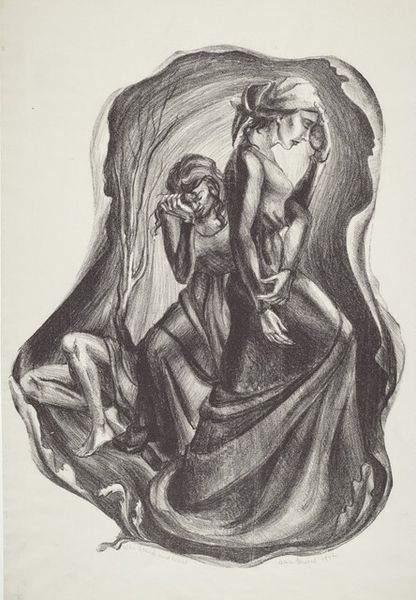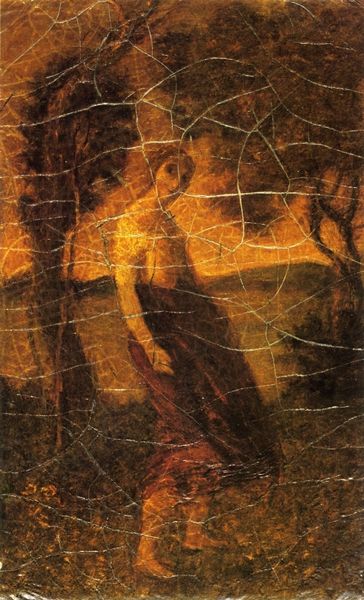
Dimensions: 1975 mm (height) x 1415 mm (width) (bladmaal)
Editor: Here we have Niels Larsen Stevns’ “Five Angels, the foremost blowing the trumpet,” painted in 1921. It’s oil on paper, with a sort of monochromatic palette that gives the image an ethereal, otherworldly quality. What strikes me is the sort of… lack of detail, almost unfinished feeling. What do you see in this piece? Curator: The symbols are very interesting in Stevns' work. Angels, trumpets, the number five – all laden with cultural and religious significance. Have you considered the historical context of 1921? The aftermath of World War I, a period of immense loss and societal upheaval? Editor: I hadn't thought about the post-war context explicitly. Curator: Consider the trumpet. Throughout history, trumpets have symbolized announcements, often of profound change, judgement, or even warnings. Think about their use in religious ceremonies and in military contexts. Now, picture these angels. They aren't just playing music; they are declaring something. The choice to depict five angels, each a subtle variation of the other, also seems very intentional, doesn't it? Perhaps alluding to faith, hope, love, justice, and peace? Or maybe the five senses? What would you say the muted color palette signifies? Editor: Maybe a sense of quiet, like they're mourning but there's a sense of resolution at the same time? Curator: Precisely. Stevns might be showing not just loss, but resilience—a visual representation of how culture uses familiar symbols to process collective trauma and strive towards renewal. It is so interesting how humans use images to find some kind of inner peace. Editor: That's fascinating! I never would have considered the weight of those symbols individually, nor the moment it was created. This really highlights the intersection of art, history, and the human experience.
Comments
No comments
Be the first to comment and join the conversation on the ultimate creative platform.

